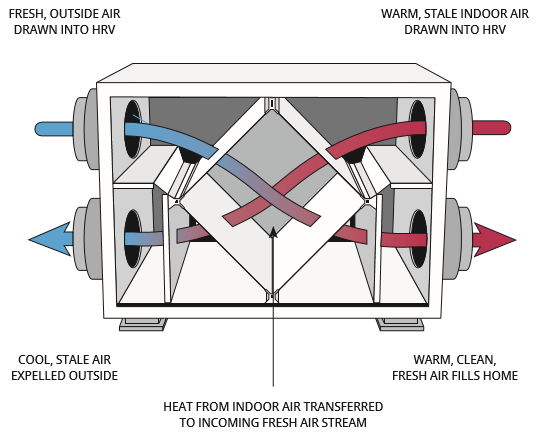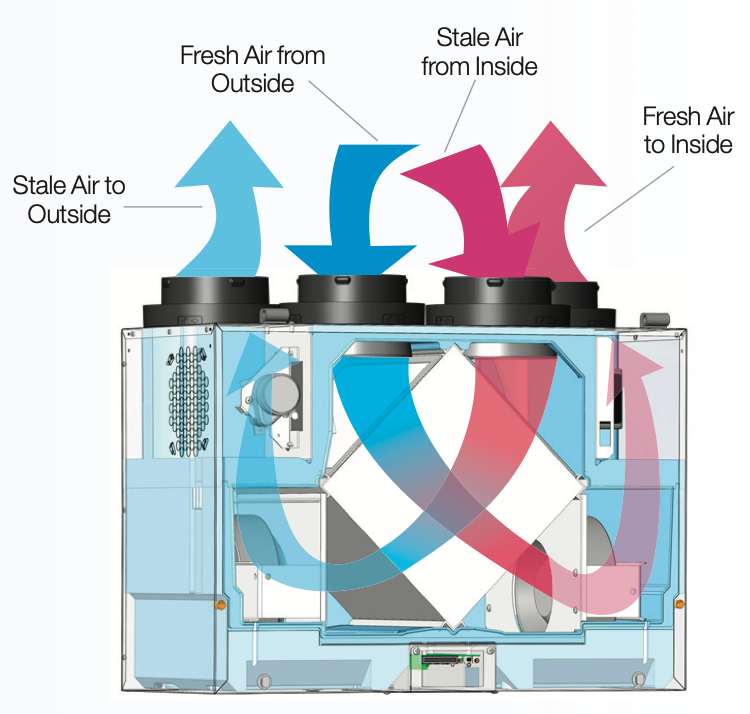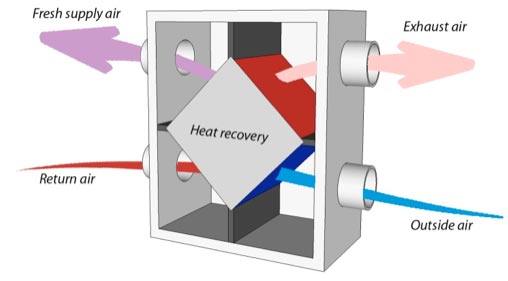Action Plan: What to Consider Before Buying HRV
Wiki Article
The All-Inclusive Guide to the Uses of Heat Recovery Ventilation in Modern Buildings
Heat Recovery Ventilation (HRV) systems stand for a considerable improvement in building modern technology (HRV Heat Recovery Ventilation). They offer an approach for trading stagnant indoor air with fresh outside air while minimizing power loss. This approach not just enhances interior air top quality but likewise contributes to energy performance in both domestic and business buildings. Recognizing the numerous applications and benefits of HRV can disclose its crucial duty in modern style and sustainability initiatives. The implications of this innovation deserve exploring additionallyUnderstanding Heat Recovery Ventilation Systems

Although several modern-day buildings prioritize power efficiency, comprehending warmth recovery ventilation (HRV) systems is crucial for maximizing interior air quality and decreasing power consumption. HRV systems work by transferring heat from stale indoor air to inbound fresh air, successfully maintaining comfortable interior temperature levels while reducing energy loss. These systems consist of a heat exchanger, fans, and ductwork that facilitate the blood circulation of air. During wintertime, HRV units capture and reuse warmth from the outward bound air, while in summer, they can help cool inbound air. By continuously trading air, HRV systems additionally reduce moisture and the focus of interior contaminants. Correct setup and maintenance of HRV systems are vital for their performance and effectiveness in enhancing total structure performance and convenience.
Benefits of Heat Recovery Ventilation
Heat recovery ventilation systems offer numerous advantages that improve both energy efficiency and interior air quality in modern-day buildings. By recording and recycling energy from exhaust air, these systems greatly reduce cooling and heating prices, causing lower energy consumption. They preserve a steady circulation of fresh outdoor air, decreasing the danger of interior air contaminants and irritants. This continuous exchange aids control moisture levels, preventing mold and mildew development and guaranteeing a much healthier living environment. In addition, HRV systems contribute to sustainability objectives by decreasing total carbon footprints. Their capability to optimize ventilation without giving up thermal comfort makes them a useful enhancement to contemporary structure layout, promoting both economic and eco-friendly benefits.Applications of HRV in Residential Structures
As home owners significantly prioritize power efficiency and indoor air top quality, the applications of heat healing air flow (HRV) systems in domestic buildings have actually ended up being more common. HRV systems are specifically advantageous in securely secured homes, where maintaining fresh air circulation is necessary for protecting against moisture accumulation and interior toxins. They effectively transfer warm from outbound stagnant air to inbound fresh air, lowering power prices associated with heating and cooling. Additionally, HRVs can boost convenience degrees by managing moisture and temperature level. They are additionally versatile for numerous property styles, including single-family homes and multi-unit buildings. Generally, integrating HRV systems sustains sustainable living techniques while ensuring a healthier indoor atmosphere for owners.HRV in Industrial and Industrial Settings
In commercial and industrial settings, the implementation of warmth healing ventilation (HRV) systems has come to be significantly crucial for maximizing power effectiveness and preserving air quality. These systems effectively move warmth from exhaust air to inbound fresh air, reducing the requirement for extra heating or cooling. This not only decreases power expenses however additionally adds to sustainability initiatives. Industries such as manufacturing, warehousing, and office complex benefit considerably from HRV systems, as they assist manage temperature he has a good point level and moisture levels, guaranteeing a comfy and effective environment. HRV systems help in getting rid of impurities and excess wetness, improving indoor air high quality. As policies around air top quality come to be more stringent, the adoption of HRV innovation is likely to grow, making it a crucial component of modern-day industrial and industrial framework.Future Trends in Heat Recovery Ventilation Modern Technology

Frequently Asked Concerns
Exactly How Does Heat Recovery Ventilation Effect Indoor Air High Quality?
Heat recovery ventilation greatly boosts indoor air high quality by continually exchanging stagnant interior air with fresh outside air while recovering energy. This procedure reduces contaminants, keeps perfect humidity levels, and ensures a much healthier environment for owners.Can HRV Systems Be Installed in Existing Structures?
HRV systems can certainly be mounted in existing structures. Retrofitting may require adjustments to ductwork and ventilation formats, yet it considerably enhances power effectiveness and interior air top quality, making it a practical choice for older structures.What Upkeep Is Required for HRV Solutions?

Exist Specific Climates Where HRV Is More Reliable?
Heat recovery this link ventilation systems are specifically reliable in environments with significant temperature level differences in between seasons. These systems maximize power effectiveness by recouping warmth from exhaust air, making them optimal here are the findings for both cold and moderately warm environments.Exactly How Do HRV Equipments Affect Power Costs?

Report this wiki page